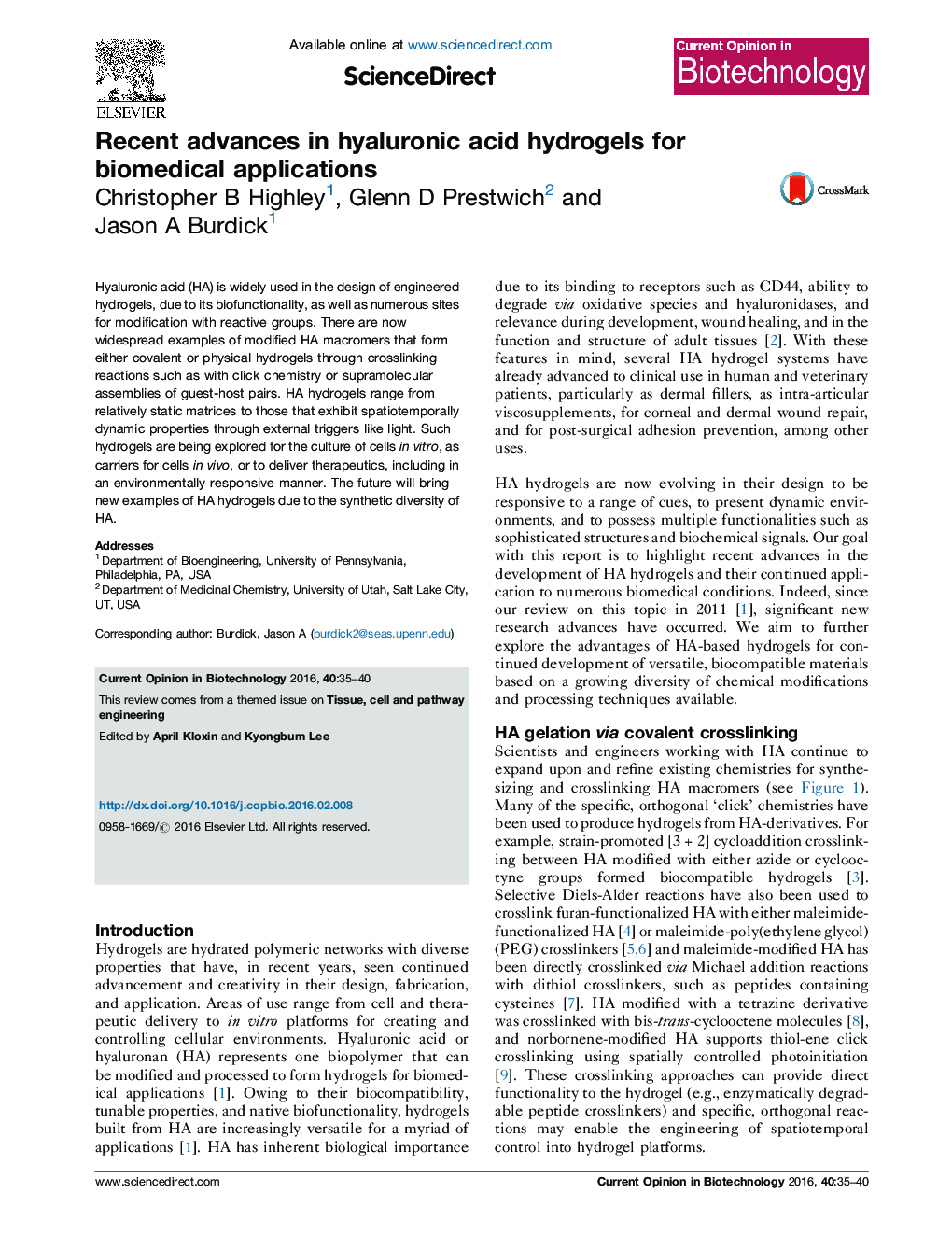| Article ID | Journal | Published Year | Pages | File Type |
|---|---|---|---|---|
| 6487457 | Current Opinion in Biotechnology | 2016 | 6 Pages |
Abstract
- New modifications to hyaluronic acid (HA) enable both covalent crosslinking and supramolecular assembly.
- Composite HA hydrogels permit controlled drug delivery and mechanical toughness.
- Processing such as electrospinning, 3D printing, and photopatterning allow the formation of complex structures in HA hydrogels.
- HA hydrogels are engineered to influence the fate of encapsulated or endogenous cells.
- HA hydrogels continue to advance basic science and translational biomedical research.
Related Topics
Physical Sciences and Engineering
Chemical Engineering
Bioengineering
Authors
Christopher B Highley, Glenn D Prestwich, Jason A Burdick,
